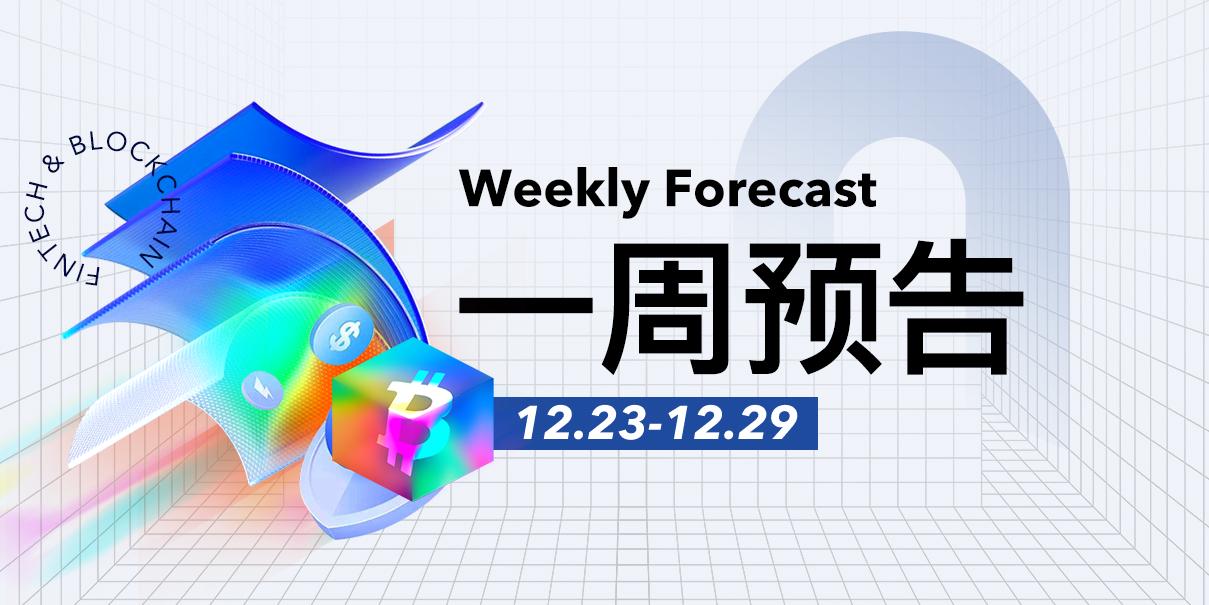-
 PA一线 · 5時間前
データ:イーサリアムチェーン上のNFT売上高は過去7日間で2億米ドルを超え、Pudgy Penguinsが4分の1以上を占めた
PA一线 · 5時間前
データ:イーサリアムチェーン上のNFT売上高は過去7日間で2億米ドルを超え、Pudgy Penguinsが4分の1以上を占めたPANewsは12月22日、CryptoSlamのデータによると、イーサリアムチェーンでのNFT売上高が過去7日間で2億米ドルを超え、現在2億339万3,393米ドルに達していると報告しました。その中にはNFTプロジェクトPudgyも含まれます。ペンギンの売上は5,273万1,146米ドルに達し、イーサリアムチェーンのNFT売上の約25.9%を占めて1位となり、LilPudgysの売上は1,864万5,354米ドルに達し、2位にランクされ、1,733万9,164米ドルに達しました。
-
 PA一线 · 9時間前
データ: MRS、ADA、ENA などのトークンは来週大量にロック解除され、ロック解除された MRS の価値は約 3,470 万米ドルになります。
PA一线 · 9時間前
データ: MRS、ADA、ENA などのトークンは来週大量にロック解除され、ロック解除された MRS の価値は約 3,470 万米ドルになります。PANews は 12 月 22 日、トークンのロック解除データは、MRS、ADA、ENA などのトークンが来週大量にロック解除されることを示していると報じました。その中には、Metars Genesis (MRS) が 12 月 23 日午前 8 時に北京で約 1,000 万のロックが解除される予定です。時間トークン、現在の流通供給量に対する比率は 11.87%、価値は約 3,470 万米ドルです。 Cardano (ADA) は、12 月 26 日の北京時間午前 8 時に約 1,853 万トークンのロックを解除します。これは、現在の流通供給量の 0.05% を占め、約 1,660 万米ドル相当です。 Ethena (ENA) は、8 時に約 1,853 万トークンのロックを解除します。北京時間12月25日午前0時、同日午後3時に、約1,286万枚のトークンがロック解除され、現在の流通供給量の0.44%に相当し、約1,350万米ドル相当となった。 Murasaki (MURA) は北京時間 12 月 23 日午前 8 時に約 2,000 万トークンのロックを解除します。これは現在の流通量の 34.84% を占め、約 1,220 万米ドル相当になります。同日午前 3 時に約 129 万枚のトークンがロック解除され、現在の流通供給量の 0.61% に相当し、約 490 万米ドルに相当します。 MMX (MMX) は北京時間 12 月 24 日午前 8 時に約 167 万個のトークンをアンロックし、現在の流通量に対する比率は 1.11%、価値は約 180 万ドルになります。ヴェノム (VENOM) は 12 月 25 日にアンロックされます。 、北京時間同日午前8時に、約3,376万枚のトークンがロック解除され、現在の流通供給量の1.77%を占め、約200万米ドル相当となった。 Coin98 (C98) は、12 月 23 日の北京時間午後 7 時に約 1,653 万トークンのロックを解除します。現在の流通量に対する比率は 1.88%、価値は約 270 万米ドルです。北京時間12月23日午後7時、25日午前8時時点で、現在の流通量の1.97%に相当する約417万枚のトークンがロック解除され、約170万ドル相当となった。カラット (KARRAT) は、12 月 23 日北京時間午前 8 時に約 1,125 万個のトークンのロックを解除します。これは、現在の流通供給量に対する比率が 6.45% で、その価値は約 440 万米ドルです。
-
 PA一线 · 10時間前
アナリスト:アマゾンが現金の「少額」をビットコインで保有するのは合理的だと思われる
PA一线 · 10時間前
アナリスト:アマゾンが現金の「少額」をビットコインで保有するのは合理的だと思われるPANews、12月22日、ワシントン・ポスト紙によると、モーニングスターのアナリスト、ダン・ロマノフ氏は、一般に金がインフレヘッジに最も適した資産とみなされているが、ビットコインの方がより有用なインフレヘッジツールである可能性があると述べた。過去5年間で、ビットコインと金の価格上昇はインフレを上回っており、ビットコインの上昇幅の方がはるかに大きかった。
-
 一周预告 · 10時間前
ウィークリープレビュー | MicroStrategy がナスダック 100 指数に正式に参加、Ethena (ENA) と Cardano (ADA) が数千万ドル相当のトークンを獲得
一周预告 · 10時間前
ウィークリープレビュー | MicroStrategy がナスダック 100 指数に正式に参加、Ethena (ENA) と Cardano (ADA) が数千万ドル相当のトークンを獲得12月23日から12月29日までの来週も、注目に値するブロックチェーンニュースがまだあります。
- PA Daily | 少なくとも 10 社が MicroStrategy のビットコイン戦略の採用を検討中、今週の NFT 購入者数は前月比 92.39% 増加し、取引額は前月比 32.93% 増加して 3 億 220 万米ドルとなりました。 PA Daily | 暗号通貨の「皇帝」デイビッド・サックスは、テザーがビデオ共有プラットフォームのランブルに7億7,500万ドルを戦略的に投資していることを否定。 PA Daily | 時価総額上位 500 位の 8 つの Meme コインは毎月 50% 以上下落し、USUAL と DOGE の協力に関するフェイクニュースにより USUAL は 1.6 ドルを突破しました。
 PA一线 · 12時間前
マイケル・セイラー氏: 来年施行される会計規則により、MicroStrategy は S&P 500 の収益性要件を満たすことが可能になる可能性があります
PA一线 · 12時間前
マイケル・セイラー氏: 来年施行される会計規則により、MicroStrategy は S&P 500 の収益性要件を満たすことが可能になる可能性がありますPANewsは12月22日、バロンズ紙によると、MicroStrategyのマイケル・セイラー会長は最近のインタビューで同社がS&P500に含まれるかどうかについては明らかにしなかったが、ビットコインに対する楽観的な見方を考慮すると、MicroStrategyはS&P500に含まれることはないと述べたと報じた。来年にはS&P 500に採用される可能性があり、ビットコイン保有額の増加により数十億ドルの四半期純利益が報告される可能性があり、2025年に発効する予定の会計規則変更により、MicroStrategyはS&P 500に参加するための収益性要件を満たせるようになる可能性がある。
-
 PA日报 · 12時間前
PA Daily | 少なくとも 10 社が MicroStrategy のビットコイン戦略の採用を検討中、今週の NFT 購入者数は前月比 92.39% 増加し、取引額は前月比 32.93% 増加して 3 億 220 万米ドルとなりました。
PA日报 · 12時間前
PA Daily | 少なくとも 10 社が MicroStrategy のビットコイン戦略の採用を検討中、今週の NFT 購入者数は前月比 92.39% 増加し、取引額は前月比 32.93% 増加して 3 億 220 万米ドルとなりました。分散型流動性プロトコルTHORChainはV3バージョンをリリース、ワームホールDAOは来年第1四半期に開始される予定、エルサルバドル大統領はさらに2万枚の資産管理会社を購入するという中期目標を掲げている。 GraniteShares は、MicroStrategy や Robinhood などの企業を追跡するためにレバレッジ ETF の暗号通貨関連を申請しました。
-
 Foresight News · 12時間前
相場が下落する中、トップトレーダーは相場の見通しをどう見ているのでしょうか?
Foresight News · 12時間前
相場が下落する中、トップトレーダーは相場の見通しをどう見ているのでしょうか?上値脱出のために売るか、それとも思い切って下値を買うか?
-
 Weilin · 12時間前
従来の銀行はレイヤー 2 に参入しています。ドイツ銀行は ZKsync に基づいて構築されており、複数のユースケースをテストしています。
Weilin · 12時間前
従来の銀行はレイヤー 2 に参入しています。ドイツ銀行は ZKsync に基づいて構築されており、複数のユースケースをテストしています。従来の金融機関もレイヤー 2 への移行を開始しています。ドイツ銀行は、イーサリアムをベースとしたレイヤー 2 ソリューションを立ち上げています。このプロジェクトは Project Dama 2 と呼ばれています。そのベータ版は 11 月に立ち上げられ、規制当局の承認を経て来年正式に立ち上げられる予定です。
-
 Yuliya · 14時間前
4 人のトップ投資家が討論: 2024 年の仮想通貨市場の成功と失敗、そして 2025 年の予測
Yuliya · 14時間前
4 人のトップ投資家が討論: 2024 年の仮想通貨市場の成功と失敗、そして 2025 年の予測Robot Ventures、Dragonfly、Superstate のレビューと見通し、BTC は 2025 年に 180,000 米ドルに達する可能性があります。
-
 金色财经 · 15時間前
北朝鮮のハッカーは仮想通貨プラットフォームから盗んだ資金で何をしたのでしょうか?
金色财经 · 15時間前
北朝鮮のハッカーは仮想通貨プラットフォームから盗んだ資金で何をしたのでしょうか?北朝鮮に関係のあるハッカーは47件の事件で13億4000万ドルを盗み、その年の盗まれた総額の61%、事件総数の20%を占めた。
- 暗号通貨の流動時価総額(7日間)$3,541,763,733,716Market Cap恐怖・貪欲指数(過去30日間)
 PA一线 · 15時間前
ワームホール DAO は来年の第 1 四半期に発売される予定
PA一线 · 15時間前
ワームホール DAO は来年の第 1 四半期に発売される予定クロスチェーンプロトコル Wormhole は、Wormhole DAO が 2025 年の第 1 四半期に開始されると発表しました。最初の投票に参加するには、W 保有者がガバナンス出資を行う必要があります。ワームホール ステーキング報酬プログラム (SRP) はすべてのチェーン (EVM + Solana) で進行中であり、報酬プールの第 1 段階では少なくとも 5,000 万 W トークンが割り当てられます。
-
 PA一线 · 16時間前
かつてスイングトレードでPEPEで492万米ドルの利益を上げたある賢いマネーは、4時間前に新たに4,753億PEPEのポジションをオープンした。
PA一线 · 16時間前
かつてスイングトレードでPEPEで492万米ドルの利益を上げたある賢いマネーは、4時間前に新たに4,753億PEPEのポジションをオープンした。オンチェーンアナリスト@ai_9684xtpaの監視によると、「過去6か月間で$PEPEバンドを通じて492万米ドルの利益を上げたスマートマネー」は、4時間前にさらに4753億PEPEポジションをオープンし、820万米ドルに相当するという。平均価格は 0.00001724 ドルで、現在、変動利益は 142,000 ドルです。 12月、5頭の巨大クジラがPEPEに「大きな賭けをした」
-
 PA一线 · 16時間前
現在、少なくとも 10 社が MicroStrategy のビットコイン戦略を検討中
PA一线 · 16時間前
現在、少なくとも 10 社が MicroStrategy のビットコイン戦略を検討中人工知能企業ジーニアス・グループを含む少なくとも10社が現在、MicroStrategyのビットコイン戦略を利用している、または導入を検討している。
-
 PA一线 · 17時間前
クジラは2万5000ソルを販売し、31万3000米ドルの利益を得た疑いがある。
PA一线 · 17時間前
クジラは2万5000ソルを販売し、31万3000米ドルの利益を得た疑いがある。オンチェーンアナリスト @ai_9684xtpa による監視によると、アドレス HHqC...y8Aqu は 2 か月前に 169.6 米ドルでポジションをオープンした 25,000 SOL を売却した疑いがあり、売却されれば 313,000 米ドルの利益が得られます。巨大なクジラは依然として SOL ポジション (つまり 25,000 SOL) の 50% を保持しており、変動利益は 310,000 米ドルであり、これらの 50,000 SOL の最大変動利益は 473 万 8000 米ドルでした。
-
 PA一线 · 17時間前
分散型流動性プロトコル THORChain が V3 バージョンをリリース
PA一线 · 17時間前
分散型流動性プロトコル THORChain が V3 バージョンをリリース分散型流動性プロトコル THORChain の V3 バージョンがリリースされました。このアップデートでは、Cosmos SDK v0.50 へのアップグレード、Tendermint から CometBFT への切り替え、Cosmos エコシステム互換性の導入、Rujira アプリケーション層への参加など、高度な相互運用性とスマート コントラクト機能が提供されます。
-
 PA一线 · 18時間前
資産管理会社GraniteSharesはMicroStrategyやRobinhoodなどの企業を追跡するために暗号通貨関連のレバレッジETFを申請
PA一线 · 18時間前
資産管理会社GraniteSharesはMicroStrategyやRobinhoodなどの企業を追跡するために暗号通貨関連のレバレッジETFを申請ニューヨークに拠点を置き、運用資産総額100億ドルを超える資産管理会社GraniteSharesは、Riot Platforms、Marathon Digital、MicroStrategy、Robinhoodなどの企業を追跡するための新しいレバレッジETFを申請した。これらの資金はロングとショートの両方になります。 2 倍のロング ETF は、対応する株式の 1 日当たりのリターンの 2 倍を生み出します。
-
 深潮TechFlow · 18時間前
オンチェーンユーザーに関する年次報告書: 月間新規ユーザー数は最大1,940万人に達し、Baseチェーンが増加の70%近くに貢献
深潮TechFlow · 18時間前
オンチェーンユーザーに関する年次報告書: 月間新規ユーザー数は最大1,940万人に達し、Baseチェーンが増加の70%近くに貢献一般ユーザーを価値の高い貢献者に変えるという点では、ほとんどのブロックチェーンはまだ初期段階にあります。
-
 PA一线 · 18時間前
あるクジラ/機関は昨夜以来約127万EIGENを換金し、チェーン上で販売した
PA一线 · 18時間前
あるクジラ/機関は昨夜以来約127万EIGENを換金し、チェーン上で販売した昨夜7時以来、彼らは4つのアドレスにEigenLayerプレッジ契約から1,270,507 EIGEN(502万米ドル)を引き換えさせ、ETHまたはUSDCとチェーン上で販売しています。 EIGEN は償還され、4 つの住所に販売されました。数日前、EIGEN が最高値 5.6 ドルに達したとき、891 万 7000 EIGEN は 1765 万ドルの利益を上げました。しかし現在はコストライン付近まで下落している。
-
 白话区块链 · 19時間前
暗号通貨取引における心理的側面: なぜマインドセットがそれほど重要なのでしょうか?
白话区块链 · 19時間前
暗号通貨取引における心理的側面: なぜマインドセットがそれほど重要なのでしょうか?心理的ゲートは仮想通貨取引において重要な役割を果たします。トレーダーはラウンドナンバーの価格ポイントに関して感情的な決定を下すことが多く、これらのゲートの反応は市場のボラティリティと価格の動きに影響を与える可能性があります。
-
 PA一线 · 20時間前
調査: ブロックチェーンと暗号通貨技術の国ランキングでシンガポールがトップ、米国が第5位
PA一线 · 20時間前
調査: ブロックチェーンと暗号通貨技術の国ランキングでシンガポールがトップ、米国が第5位ApeX による最近の調査では、ブロックチェーンと暗号通貨技術のトップ 10 先進国がリストされており、シンガポールがリストのトップとなっています。この調査では、ブロックチェーンの特許、ブロックチェーン技術の雇用、仮想通貨取引所の数という3つの主要指標を通じてブロックチェーンの開発と導入を反映する複合指数を使用して各国を評価した。
続きを読む Dec . 23
Dec.23




































